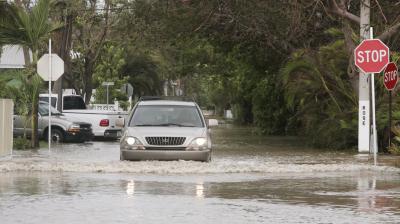The hazard warning lights are designed to warn other drivers that your vehicle is experiencing a problem. This could mean the vehicle is traveling at a reduced speed, is pulling off to the side of the road or is already on the shoulder. It is primarily a warning device to signal motorists that they should give a wide berth when passing or to slow down. This does not always happen due to drivers engulfed in other matters that reduce their attentiveness to the surrounding situations.

Whenever a situation develops requiring a reduction in speed--far less than the posted speed limit--the warning lights or hazard lights should be turned on. Whenever using the hazard lights, increased situational awareness of approaching traffic from the rear should be used. Always watch for cars approaching at too fast a pace so that an evasive maneuver can be attempted if necessary. Also watch all traffic in front and approaching on side streets. Some drivers will get impatient when the approaching vehicle has slowed, and they have a tendency to pull out in front.

Never drive on a high-speed road for any distance at a low speed as the odds increase of meeting up with a complacent driver who will notice the hazard lights too late to decrease speed enough to prevent collision. Do not drive with the hazard lights on and at a reduced speed on a curvy road, where a driver will not notice the lights until the last minute when rounding a curve.

Always pull off the road at the first safe spot, preferably in a spot with enough shoulder to allow plenty of room away from the road and on a straight stretch where other motorist can see the vehicle for quite some distance.

Always have safety deflectors in the trunk to put behind the vehicle to warn drivers of an impedance on the side of the road. This, along with your hazard warning lights, will give ample time for reaction. Place the deflectors no less than 20 yards behind the vehicle and close to the side of the road to force drivers to move over to avoid the deflector.

Whenever possible, place the vehicle on the most level surface possible if a tire is the problem. It will make it much easier to change the tire. If the tire problem is on the driver’s side, ample room is necessary to change the tire and remain far enough away from traffic for safety. If not possible, place the reflectors farther behind the vehicle. Start with one deflector on the side of the road and the next farther out in secession to force the traffic to move over. Make sure the traffic has ample time to react to the hazard warning lights and the reflectors. If not, call for a tow truck rather than risk life and limb on a narrow shoulder close to curves. If no reflectors are available, turn the hazard warning lights on and call for help. Always look for traffic before exiting the vehicle on the side of the road.
